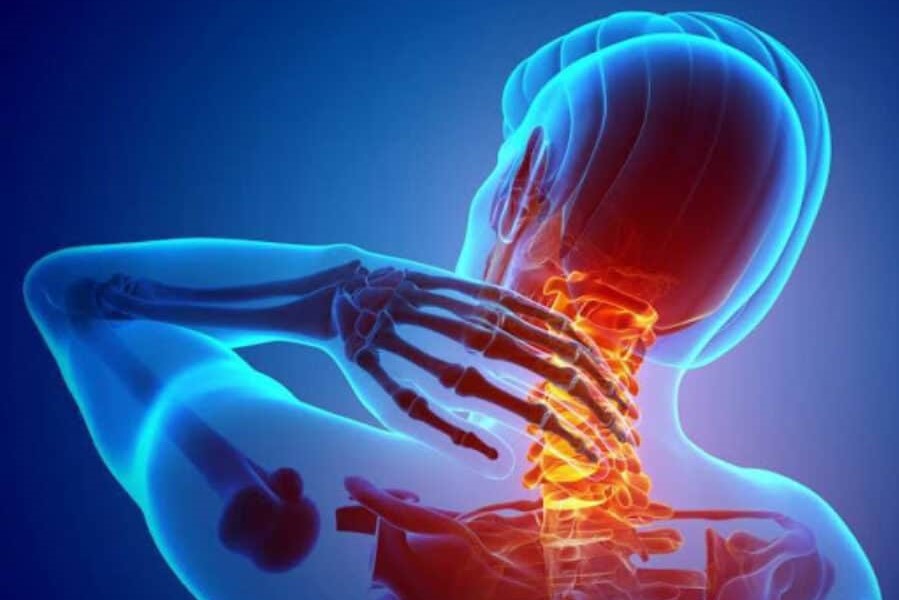
Cervicalgia, what it is caused by and how to deal with neck pain
Cervicalgia, commonly referred to as ‘I have neck pain’, is pain in the neck and trapeziums caused by inflammation that makes movement difficult
It causes stiffness in the neck and in severe cases can radiate to the arms causing numbness in the hands and be accompanied by other symptoms such as headaches, dizziness, a feeling of nausea and even disturbances in vision and hearing.
Neck pain is a symptom of a degenerative process of the upper spine due, for example, to cervical arthrosis, herniated cervical discs or cervical disc arthrosis.
But cervicalgia can also be caused by:
- inadequate exertion or an excessive load (e.g. a heavy bag or backpack);
- incorrect posture (e.g. sitting at a computer);
- trauma and injuries (classic whiplash);
- sedentary lifestyle;
- tension, anxiety and stress.
Neck pain should not be confused with torticollis
Torticollis in fact, unlike dull and persistent neck pain, is usually characterised by violent twinges due to a sudden contracture.
What to do in case of cervicalgia
Cervicalgia is one of the most common musculoskeletal disorders in the Western world, especially in adulthood and particularly among women.
Although in most cases its origin is not serious, neck pain should not be underestimated.
Especially when cervicalgia lasts for a long time or when it occurs with a certain frequency, it is always advisable to consult a doctor in order to identify the exact origin of the pain and to approach the most suitable therapy.
Treatment of neck pain
Usually the pharmacological therapy of choice in cases of neck pain is analgesic drugs or non-steroidal anti-inflammatory drugs (NSAIDs), either orally or in the form of creams, gels and patches to be applied locally.
Pharmacological therapy must be combined with behaviour aimed at reducing symptoms:
- rest;
- attention to posture;
- use collars that keep the neck in the correct position;
- avoid subjecting the neck joints to excessive loads;
- warm compresses to relax the muscles or cold compresses to dull the inflammation;
- physiotherapy and osteopathic manipulations.
Read Also:
Emergency Live Even More…Live: Download The New Free App Of Your Newspaper For IOS And Android
Cervicalgia: Why Do We Have Neck Pain?
The Causes Of Acute Low Back Pain
Cervical Stenosis: Symptoms, Causes, Diagnosis And Treatment
Cervical Collar In Trauma Patients In Emergency Medicine: When To Use It, Why It Is Important
Headaches And Dizziness: It Could Be Vestibular Migraine
Migraine And Tension-Type Headache: How To Distinguish Between Them?
First Aid: Distinguishing The Causes Of Dizziness, Knowing The Associated Pathologies
Paroxysmal Positional Vertigo (BPPV), What Is It?
Cervical Dizziness: How To Calm It Down With 7 Exercises
What Is Cervicalgia? The Importance Of Correct Posture At Work Or While Sleeping
Lumbago: What It Is And How To Treat It
Back Pain: The Importance Of Postural Rehabilitation


